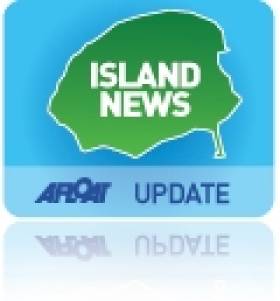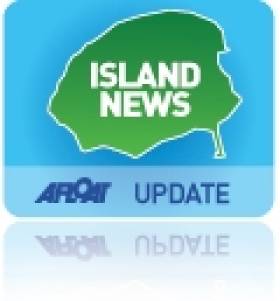Displaying items by tag: West Cork islands
The West Cork Islands of Bere, Dursey, Garnish, Heir, Long, Cape Clear, Sherkin and Whiddy are inviting visitors to 'explore the islands, experience island life' in a special island festival in June.
The idea behind the celebration from June 15 and 16 is to encourage visitors to see what life on an island is like. The island communities are saying 'be an islander for the weekend'. Enjoy reduced rates on ferries/cable car activities, services and accommodation. Jump on a ferry or the cable car at islander rates.
More details on the festival are here
West Cork Islanders Form Community Council
#ISLANDS – The recently established West Cork Islands Community Council was formally launched by the Mayor of County Cork, Cllr Tim Lombard at a meeting of Cork County Council in County Hall (Monday 27th February 2012).
Mr Syd Cheatle, a resident of Sherkin Island was elected chairperson of the new body which will be in a position to speak for all of the islands' communities and work for their long-term overall interests, as a voluntary, collective, representative structure modelled on Muintir na Tíre.
The Community Council should add a more representational and collective approach to the development of the West Cork Islands, and will facilitate the exchange of information and experiences between the island communities.
One of the key aims of the West Cork Islands Interagency Group was to establish a voluntary representative structure for the West Cork Islands as an Island Group. There are two members elected by the population of each of the seven inhabited islands.
The West Cork Islands have also launched their own website to inform Islanders of events and news on the Islands, to showcase the Islands to potential visitors and develop the brand of the west cork islands.
The Mayor wished the newly elected Community Council well and looked forward to exploring new ways that the Council and Forum can work together, listening and learning from each other.
"Community and town councils exist at a scale that reflects people's patterns of social interaction and their identification with place. They can therefore act to facilitate community activities, organise and sponsor community events and promote community spirit and inclusiveness," saild Cllr Lombard.
Speaking at the launch, County Manager Mr. Martin Riordan said that working together locally in an organised and focused way is one of the most effective methods of ensuring that the community's needs are heard and met and urged people to get involved. He added that voluntary activity forms the very core of all vibrant and inclusive societies and the linking together of all our west cork island communities offers great opportunities for the islands
John Walsh from Bere Island Projects Group said that they were delighted to be involved with the setting up of the West Cork Islands community council. This is the first time that the 7 inhabited of West Cork Islands will be represented by one structure and this will be a positive step forward for the communities living there.
Máirtín Ó'Méalóid, manager of the Comharchumann Chléire Teo which played a significant role in the council's development, stated that it will be a very important forum for discussion on matters collective to the seven islands of west cork and that the Comharchumann very much looks forward to working closely with the council in a supportive way into the future.
New 2012 Timetable for Cape Clear Ferry
#ISLANDS -The Cape Clear Ferry which operates the service between the Wst Cork island and Baltimore, has outlined revisions to sailing schedules for this year. The proposed changes follow a consultation process held with the islanders, as previously reported on Afloat.ie
The changes to sailings during the months of May, June and September and also to schedules between 1st April-30th December are available to view by clicking HERE.
In addition a table showing the minimum frequency of daily return sailings are also outlined.


























































